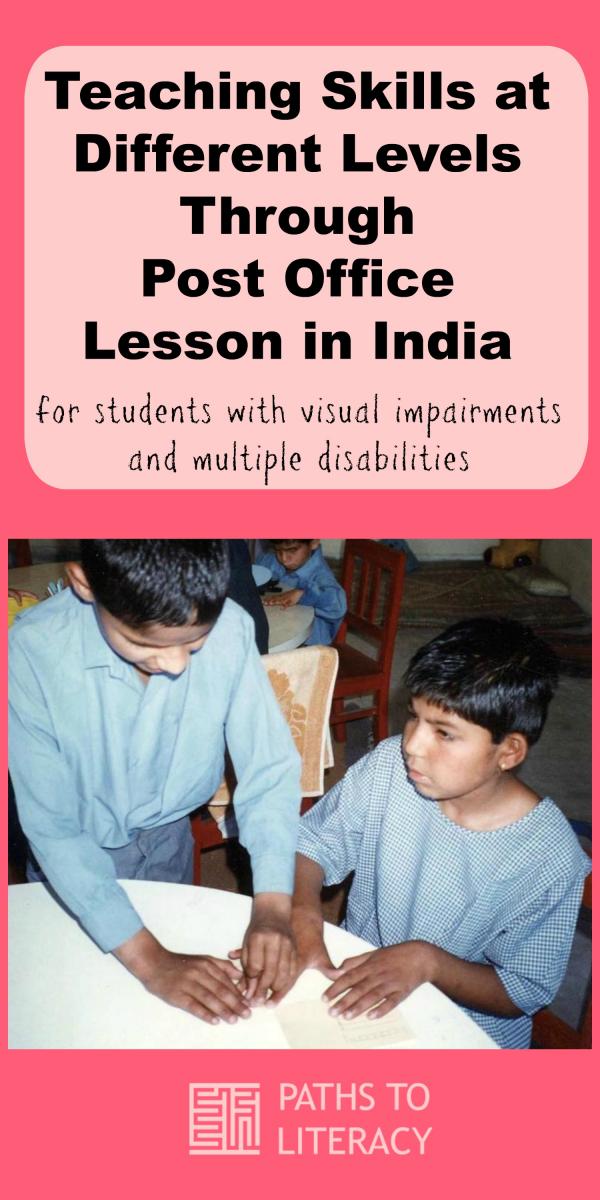Teaching Skills at Different Levels Through Post Office Lesson in India
Many teachers around the world struggle to meet the divergent needs of students who are different ages with very different needs and abilities. Not every school has the luxury of grouping students by age and ability, and this can be a challenge for both teachers and students. In addition, students with multiple disabilities and visual impairment (MDVI) typically learn best through functional activities in the natural context, rather than rote learning at desks. This example from India shows how children of different ages and abilities can each learn functional skills at their individual levels through differentiation in a group activity.
Writing a Braille Letter Home
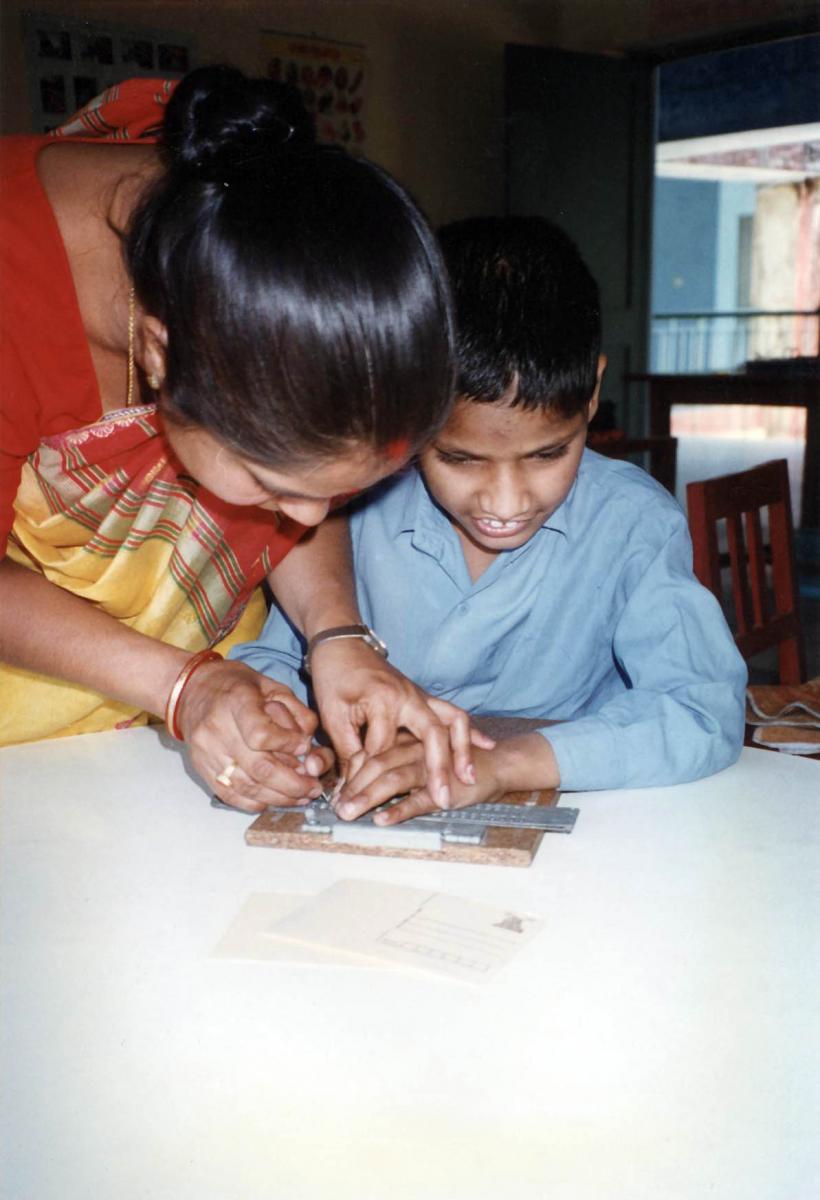
Tilak is a 10-year-old boy who attends a residential school for the blind in India. For 4 years, he struggled with the alphabet and his teachers noted that he had not mastered the ability to write a single letter in 4 years. They attempted to teach him through rote repetition at his desk, and year after year, both he and his teachers became increasingly frustrated. Because he was not able to keep up with his classmates, he was moved into a separate class for students with multiple disabilities. In this new setting, his teacher, Anusoya Sharma, invited him to write a letter to his parents, whom the boy only saw a few times each year during the school vacations. He sat and thought about this for a few minutes, and then asked his teacher, "You mean if I write something in braille on this card, my parents will know this is from me?" He got quite excited when his teacher assured him that his parents would indeed know this letter was from him. This was a moment of revelation for Tilak, when he understood the purpose of braille for the very first time. Up until that moment, it had been an abstract exercise that was not connected to any meaning for him. Blind since birth, he had never observed people around him reading or writing, and the fact that he comes from a rural area with a low literacy rate meant that there were even fewer examples of reading and writing in use around him. Children who are blind need to be explicitly told when someone is reading or writing, in order to develop an understanding of how literacy skills are woven into daily life.
Sharing Braille Letter with Classmates
After Tilak finished writing a letter in braille to his parents, he was eager to show the letter to his classmates. This gave them the chance to further understand the social aspects of braille, in that they are both braille readers. The girl in the photo below, Ashita, was also inspired to use braille to write to her family, as she is in the same residential school for the blind in India.
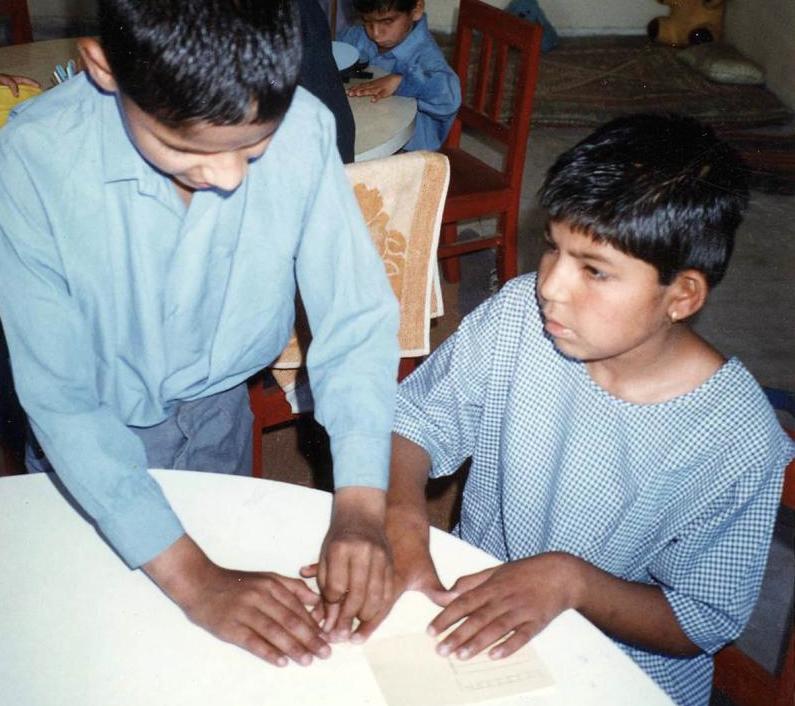
Incorporating Orientation and Mobility into the Lesson
Once Tilak finished writing his letter home, he was ready to learn the next part of the process. The class walked to the post office, where they were able to practice many functional skills, including travel skills and community experience.
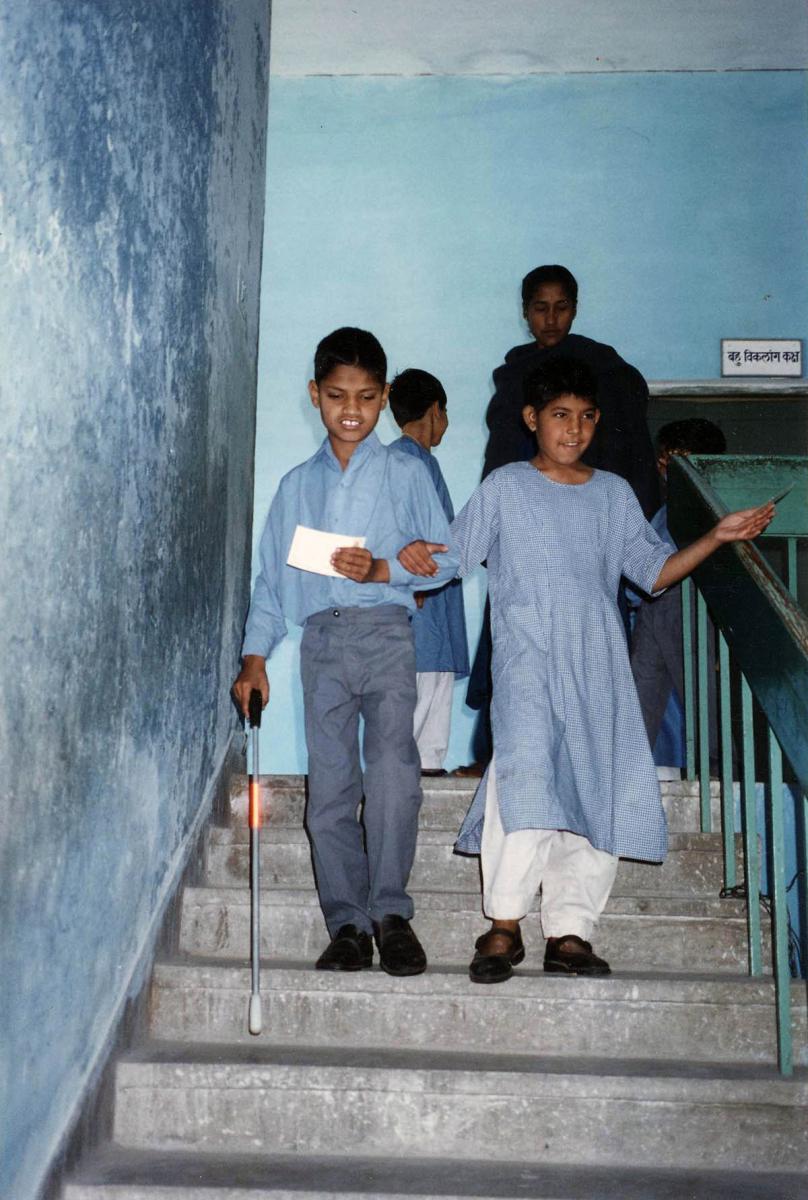
Skills for Younger Children
Younger children in the class were able to work on skills at their own level. One boy, Gurdeep, is working on basic concepts, such as in/out, up/down, top/bottom. He is also practicing tactile and fine motor skills. He used the key to unlock the school gate, which gave him the opportunity to experience the meaning of "lock" and "unlock", as well as vocabulary, such as "key". In addition, he used his fine motor skills to place the key "in" and to turn it.

Using Money Skills to Make a Purchase
Before going to the post office, the students discussed what they wanted to purchase. They decided to get one postcard for each child in the class, so that each of them could write a letter home. Again, this gave them a chance to practice many different types of skills, such as making decisions, social interaction with their classmates, and counting.
When they arrived at the post office, Tilak, who is learning to add coins together, requested the specified number of postcards and counted out the money to pay the postal worker. This allowed him to practice coin identification, as well as addition and subtraction (calculating how much change he should receive).
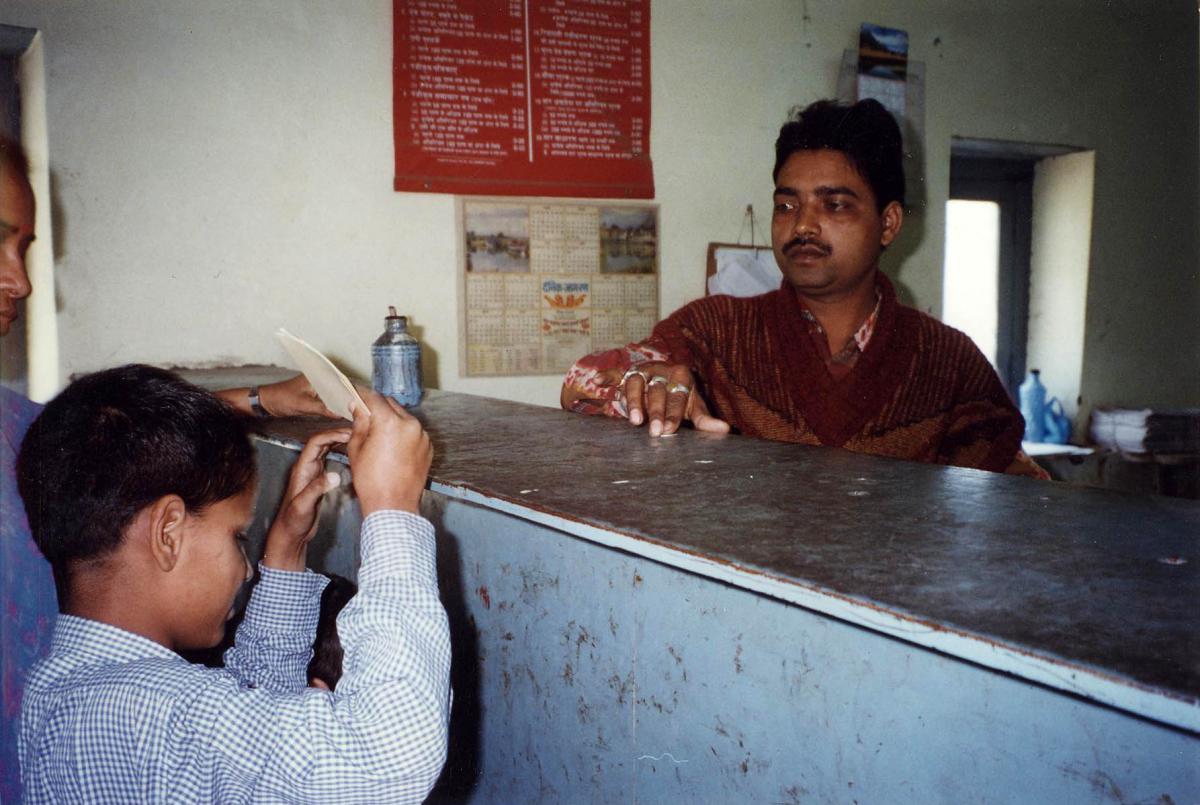
Using Language Skills to Share Experience
After making the purchase, Tilak was able to use his language and sequencing skills to explain to his classmates what he had bought.
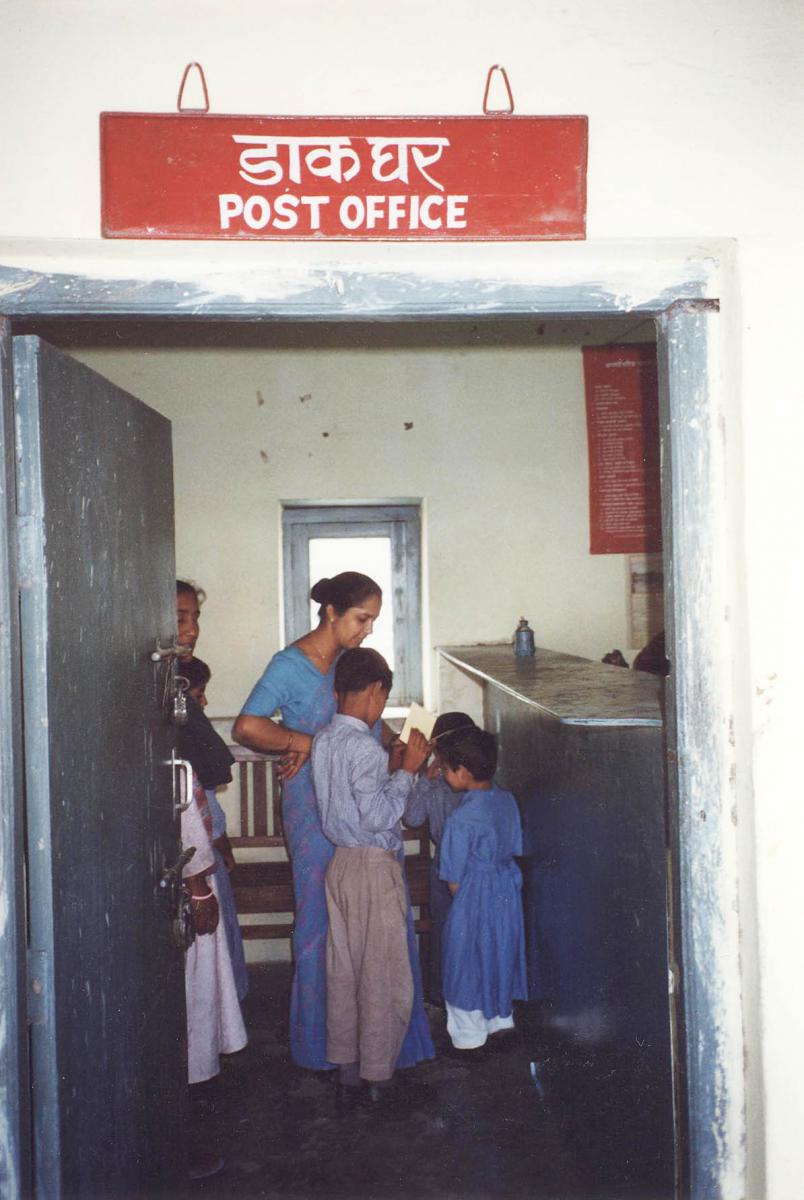
Once they were back outside, Tilak showed the postcards to the others and explained what the cards are for.
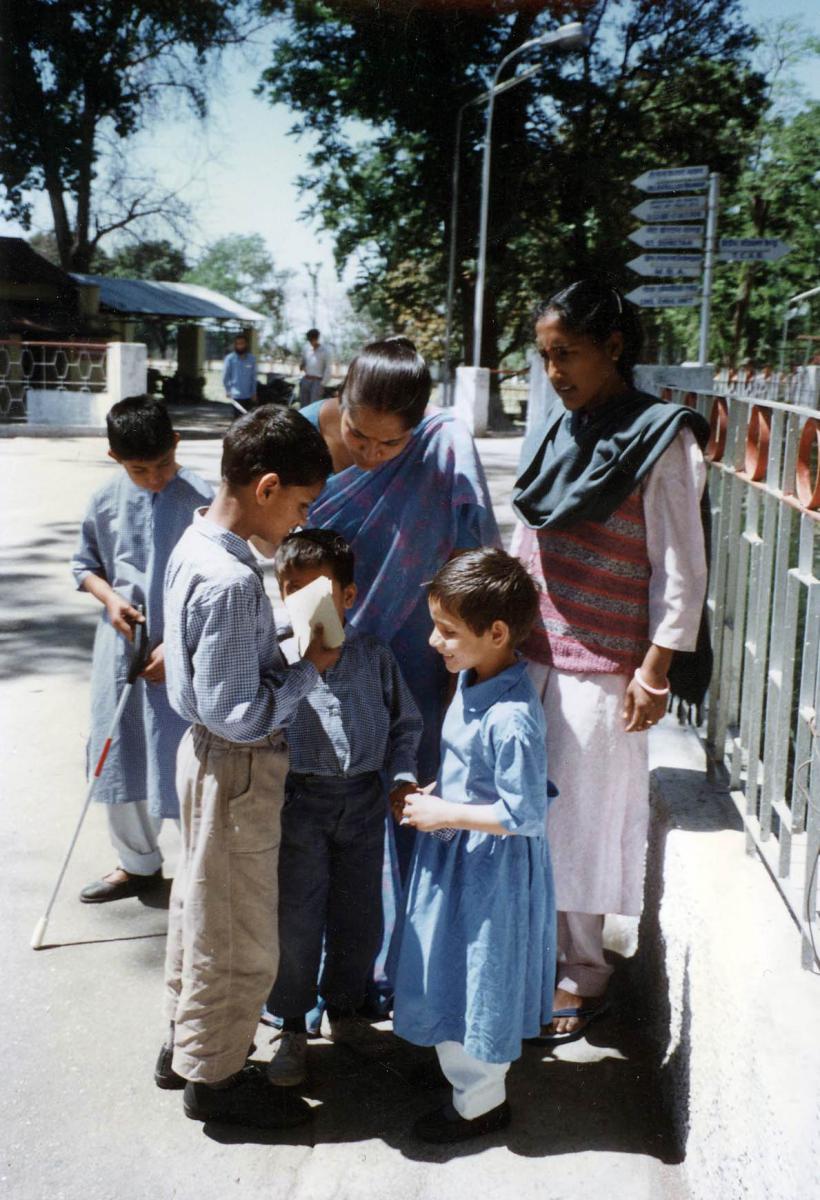
Practicing Counting Skills
The younger children practiced one-to-one correspondence by counting each of the children in the class and then counting each of the postcards, noting that there was one card for each child.
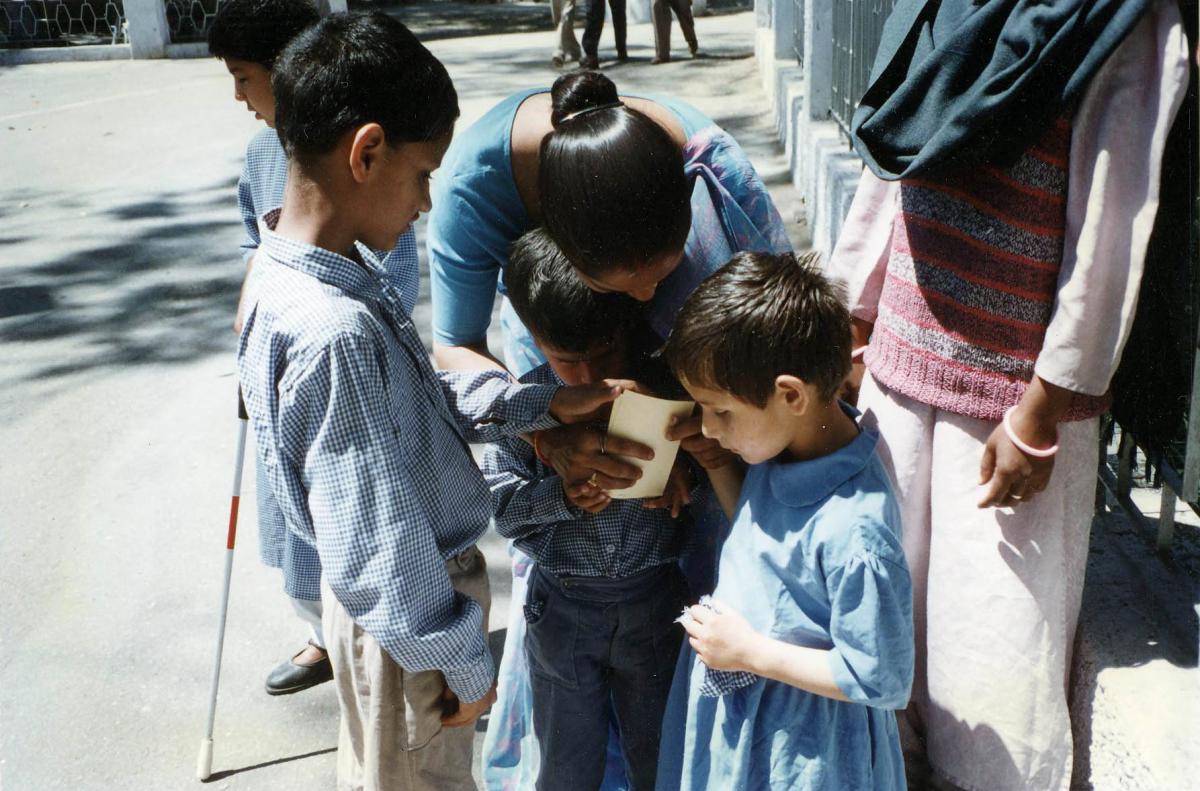
Color Identification Skills for Children with Low Vision
One boy with low vision is working on color identification. He helped to locate the big red mailbox, while his classmate placed the letters in the mail slot.
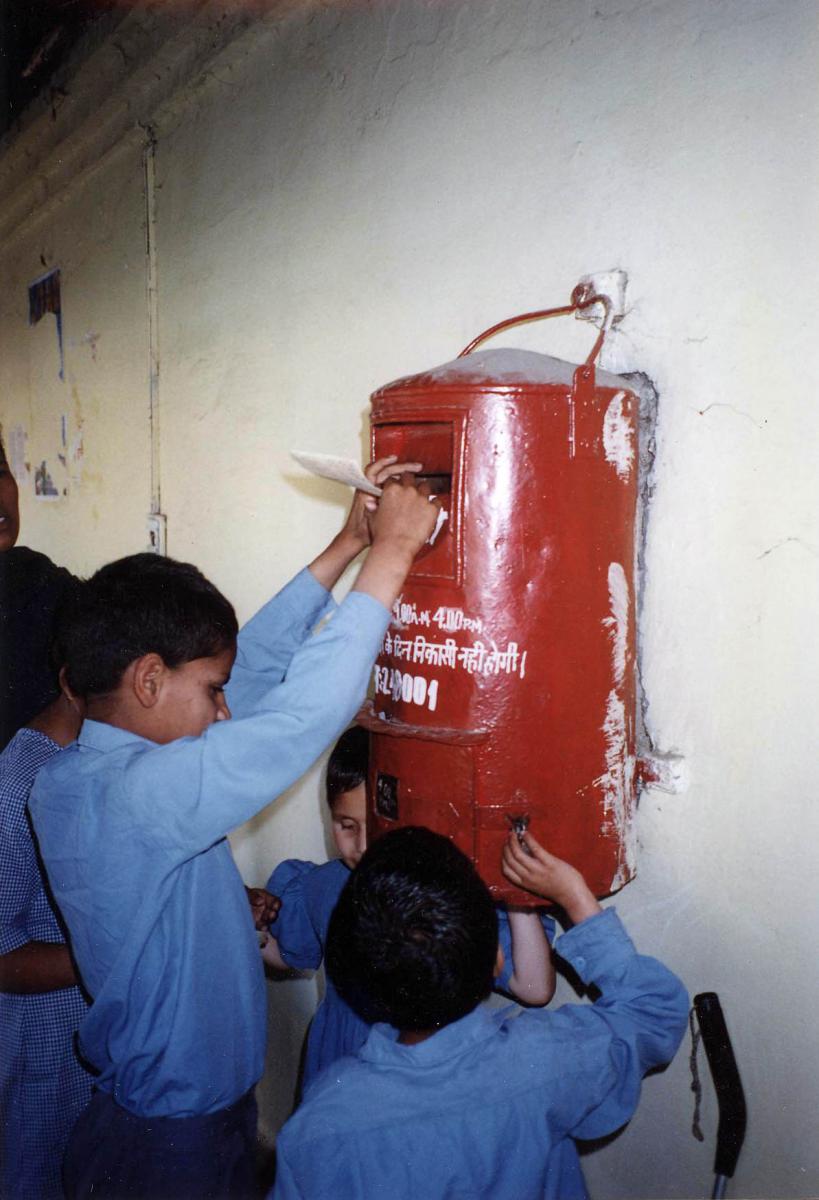
Writing a Language Experience Story about the Post Office
When the students returned to the classroom, they wrote about their trip to the post office. The younger children attached objects from the experience onto pages of their story. This included a key to represent the key for unlocking the gate, a coin, such as the one used to purchase the cards, and a postcard. The boy with low vision also made a small red box to represent the mailbox. The older children wrote the braille text for each page. This enabled each of the students to participate at their own ability level, while giving all of them practical experience through a functional activity.
